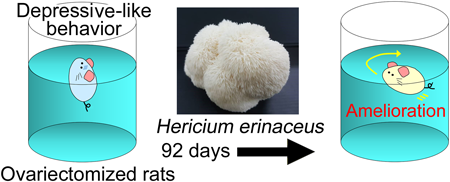- 著者
- Kaoru Umehara Naoko Mukai Jun Hata Yoichiro Hirakawa Tomoyuki Ohara Daigo Yoshida Hiro Kishimoto Takanari Kitazono Sumio Hoka Yutaka Kiyohara Toshiharu Ninomiya
- 出版者
- The Japanese Circulation Society
- 雑誌
- Circulation Journal (ISSN:13469843)
- 巻号頁・発行日
- vol.81, no.9, pp.1315-1321, 2017-08-25 (Released:2017-08-25)
- 参考文献数
- 36
- 被引用文献数
- 13
Background:Few studies have investigated the association between serum vitamin D levels and mortality in general Asian populations.Methods and Results:We examined the association of serum 1,25-dihydroxyvitamin D (1,25(OH)2D) levels with the risk of all-cause and cause-specific death in an average 9.5-year follow-up study of 3,292 community-dwelling Japanese subjects aged ≥40 years (2002–2012). The multivariable-adjusted hazard ratio (HR) for all-cause death increased significantly with lower serum 1,25(OH)2D levels (HR 1.54 [95% confidence interval, 1.18–2.01] for the lowest quartile, 1.31 [0.99–1.73] for the 2nd quartile, 0.94 [0.70–1.25] for the 3rd quartile, 1.00 [Ref.] for highest quartile; P for trend <0.001). A similar association was observed for cardiovascular and respiratory infection death (both P for trend <0.01), but not for cancer death or death from other causes. In the stratified analysis, the association between lower serum 1,25(OH)2D levels and the risk of respiratory infection death was stronger in subjects with an estimated glomerular filtration rate (eGFR) <60 mL/min/1.73 m2than in those with eGFR ≥60 mL/min/1.73 m2; there was a significant heterogeneity in the association between eGFR levels (P for heterogeneity=0.04).Conclusions:The findings suggested that a lower serum 1,25(OH)2D level is a potential risk factor for all-cause death, especially cardiovascular and respiratory infection death, in the general Japanese population, and that lower serum 1,25(OH)2D levels greatly increase the risk of respiratory infection death in subjects with kidney dysfunction.
- 著者
- Kaoru Umehara Naoko Mukai Jun Hata Yoichiro Hirakawa Tomoyuki Ohara Daigo Yoshida Hiro Kishimoto Takanari Kitazono Sumio Hoka Yutaka Kiyohara Toshiharu Ninomiya
- 出版者
- 日本循環器学会
- 雑誌
- Circulation Journal (ISSN:13469843)
- 巻号頁・発行日
- pp.CJ-16-0954, (Released:2017-04-20)
- 参考文献数
- 36
- 被引用文献数
- 13
Background:Few studies have investigated the association between serum vitamin D levels and mortality in general Asian populations.Methods and Results:We examined the association of serum 1,25-dihydroxyvitamin D (1,25(OH)2D) levels with the risk of all-cause and cause-specific death in an average 9.5-year follow-up study of 3,292 community-dwelling Japanese subjects aged ≥40 years (2002–2012). The multivariable-adjusted hazard ratio (HR) for all-cause death increased significantly with lower serum 1,25(OH)2D levels (HR 1.54 [95% confidence interval, 1.18–2.01] for the lowest quartile, 1.31 [0.99–1.73] for the 2nd quartile, 0.94 [0.70–1.25] for the 3rd quartile, 1.00 [Ref.] for highest quartile; P for trend <0.001). A similar association was observed for cardiovascular and respiratory infection death (both P for trend <0.01), but not for cancer death or death from other causes. In the stratified analysis, the association between lower serum 1,25(OH)2D levels and the risk of respiratory infection death was stronger in subjects with an estimated glomerular filtration rate (eGFR) <60 mL/min/1.73 m2than in those with eGFR ≥60 mL/min/1.73 m2; there was a significant heterogeneity in the association between eGFR levels (P for heterogeneity=0.04).Conclusions:The findings suggested that a lower serum 1,25(OH)2D level is a potential risk factor for all-cause death, especially cardiovascular and respiratory infection death, in the general Japanese population, and that lower serum 1,25(OH)2D levels greatly increase the risk of respiratory infection death in subjects with kidney dysfunction.
- 著者
- Azliza Mad Anuar Akira Minami Hiroshi Matsushita Kanako Ogino Kosei Fujita Hatsune Nakao Shota Kimura Vikineswary Sabaratnam Kaoru Umehara Yuuki Kurebayashi Tadanobu Takahashi Hiroaki Kanazawa Akihiko Wakatsuki Takashi Suzuki Hideyuki Takeuchi
- 出版者
- The Pharmaceutical Society of Japan
- 雑誌
- Biological and Pharmaceutical Bulletin (ISSN:09186158)
- 巻号頁・発行日
- vol.45, no.10, pp.1438-1443, 2022-10-01 (Released:2022-10-01)
- 参考文献数
- 59
Estrogen deficiency during menopause causes a variety of neurological symptoms, including depression. The edible Lion’s Mane mushroom, Hericium erinaceus (Bull.: Fr.) Pers. (HE), is a medicinal mushroom that has the potential for a neuroprotective effect and ameliorating neurological diseases, such as depression, anxiety, and neurodegenerative diseases. HE contains phytoestrogens, including daidzein and genistein. However, the ameliorating effect of HE on menopausal symptoms is not well understood. Here we investigated the impact of methanol extract of the HE fruiting body on depressive-like behavior in postmenopausal model rats. The activation of estrogen receptor alpha (ERα) causes body weight loss and uterine weight gain. Body weight gain and uterine weight loss by estrogen deficiency in ovariectomized (OVX) rats were reversed with 17β-estradiol (E2) but not with HE. Thus, the phytoestrogens in HE may hardly activate ERα. Estrogen receptor beta (ERβ) is expressed in the brain, and activation of ERβ ameliorates menopausal depressive symptoms. Notably, depressive-like behavior in OVX rats evaluated in forced swim test was reduced by administration of not only E2 but also HE for 92 d. Long-term activation of ERα increases the risk of breast and uterine cancers. HE, therefore, may be effective in treating menopausal depression without the risk of carcinogenesis caused by ERα activation.
